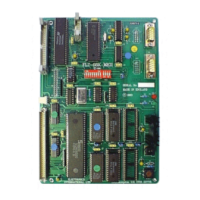57
The 68000's Instruction Set
I/O. The ASCII character in D1.B is displayed by the following
sequence.
MOVE.B #6,D0 Set up the display a character parameter in D0
TRAP #15 Now call the operating system
Condition codes: X N Z V C
- - - - -
TRAPV Trap on overflow
Operation: IF V = 1 THEN:
[SSP]
← [SSP] - 4; [M([SSP])] ← [PC];
[SSP]
← [SSP] - 2; [M([SSP])] ← [SR];
[PC]
← [M($01C)]
ELSE no action
Syntax: TRAPV
Attributes: Unsized
Description: If the V-bit in the CCR is set, then initiate exception processing.
The exception vector is located at address 01C
16
. This instruction
is used in arithmetic operations to call the operating system if
overflow occurs.
Condition codes: X N Z V C
- - - - -
TST Test an operand
Operation: [CCR] ← tested([operand])
i.e., [operand] - 0; update CCR
Syntax: TST <ea>
Attributes: Size = byte, word, longword
Description: The operand is compared with zero. No result is saved, but the
contents of the CCR are set according to the result. The effect of
TST <ea> is the same as CMPI #0,<ea> except that the CMPI in-
struction also sets/clears the V- and C-bits of the CCR.

